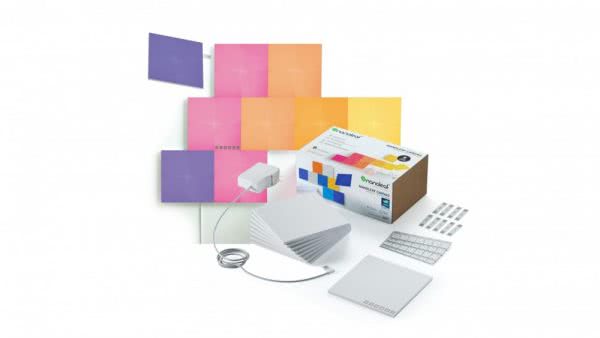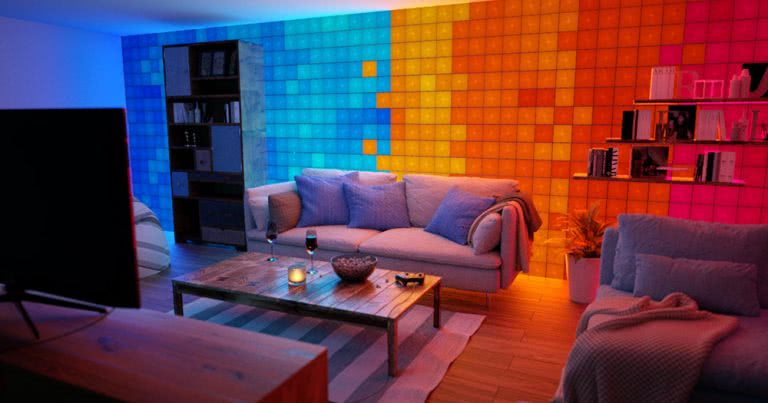Last year we got our hands on the Nanoleaf Light Panels and were thoroughly impressed with its design and functionality.
Now, the masterminds behind the unit have taken things to the next level and are hoping to make an even bigger impression on your walls with the Nanoleaf Canvas. The good news: it’s another great companion for your game room.
Much like the original Nanoleaf, setup for the Canvas is thankfully painless – simply pick a layout for each square, then link them together via sim-card-like connectors.
Unless you indulge in your inner MacGyver, actually installing the squares on the wall will require a healthy dose of mounting tape (we tried blu tack instead – to no avail), so you should probably be extra sure you’re confident about placement, because getting those suckers off is no easy feat.
Still not sure how it works? See the Nanoleaf Canvas in action!
Interestingly, the panels are actually slightly smaller than the triangular Nanoleaf panels, but the Canvas differentiates itself from its older brother with a refreshed design structure.
By dividing each square into four sections, light is dispersed across each segment – providing a look that gives off futuristic crystal vibes.
Love Film & TV?
Get your daily dose of everything happening in music, film and TV in Australia and abroad.
Meanwhile, the ability to physically interact with each individual light is also a new addition. Touch a panel, for example, and the action will effectively send a ripple out to the rest of the panels, briefly changing the colour of the scene.
Most impressive is the Canvas’ inclusion of minigames, which once connected to the Nanoleaf mobile app, can trigger experiences like Memory and Whac-a-Mole. Both instances work a treat, but some others, like the unexpected Pac-Man, are less successful due to the level speed required to survive.
How often you’ll actually interact with these games remains to be seen, but it’s an incredibly smart bit of tech and a perfect talking point during couch co-op gaming sessions with friends.

Also worth pointing out is that the rhythm functionality from the previous unit – enabling the panels to utilise an internal microphone to react to sound and music tracks – is still bundled in.
The biggest hurdle for the Canvas is undoubtedly its price tag. At around $300 for nine squares is a steep ask, especially considering that if you want to pad out your design, you’re going to need an expansion pack which nudges the whole expense past $400.
As a result, the Canvas certainly feels like a luxury product, but if you can afford to foot the bill, it’s guaranteed to add both personality and flair to your gaming space that few other products are capable of providing.

































